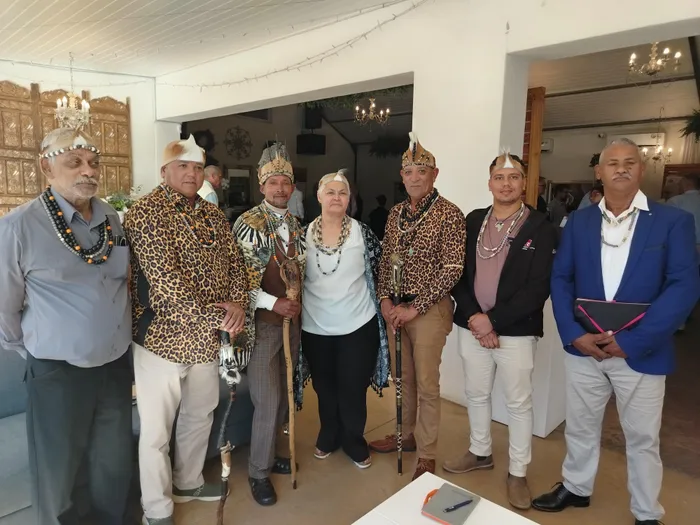Celebrating heritage: the Griqua Council's historic handover ceremony at the Castle of Good Hope

In an earlier event Khoi and San leaders gathered to advocate for inclusivity in the Cape Winelands Airport development, emphasising the importance of acknowledging their historical ties to the land and the need for job creation for their communities.
Image: Genevieve Serra/Independent Newspapers
In a poignant celebration of heritage and empowerment, the National Griqua Council, in collaboration with the National Khoi and San Council and the Biodiversity Trust, hosted a significant handover ceremony at the iconic Castle of Good Hope. The event was marked by the unveiling of the Castle's first kitchen, aptly named the Adam Kok I Kitchen, and the distribution of sewing machines to ten dedicated Griqua leaders.
This moment symbolises a firm commitment to uplifting the Griqua community through economic development and social welfare initiatives.
The ceremony served as a powerful reminder of the challenges faced by the Khoi and San communities, who historically have endured dispossession of land, cultural erosion, and limited access to vital social services.
As the Griqua people were classified under the “Coloureds” category during apartheid, the importance of this gesture resonates deeply, presenting an opportunity to rectify centuries of historical injustices.
Captain Barend Van Wyk, Chairperson of the National Griqua Council, underscored the significance of the occasion, noting that tthe handover of sewing machines represents a step towards empowering women within the community. While he acknowledged more comprehensive efforts will be required to fully address these longstanding injustices, the event stands as a commendable milestone in fostering economic opportunities for the Griqua populace.
Reflecting on the day’s achievements, Gert Links, the Nama leader of the Nama Council, articulated a sense of relief that the struggles and sacrifices made by their people have borne fruit. His remarks highlight the ongoing complexities surrounding traditional leadership and the importance of navigating tensions with governmental involvement, particularly concerning land reform and community rights.
“Our people have fought tirelessly for recognition, and today we witness a validation of those struggles,” he stressed, capturing the essence of the event.
Cecil Le Fleur, chairperson of the National Khoi and San Council, similarly commended the collaborative spirit that has brought forth the handover ceremony. He emphasised the Council's role in advocating for the rights and recognition of Khoi and San communities, recognising that such initiatives are essential for local empowerment.
The Castle of Good Hope, a revered cultural and historical landmark built in 1666, set an inspiring backdrop for this momentous occasion. Its enduring legacy as a custodian of South Africa's heritage resonated throughout the ceremony, symbolising a commitment to preserving the rich traditions and identities of the Khoi and San peoples.
This event marks not only a milestone but also a renewed hope for the Griqua community and indigenous identities, igniting a journey towards reclaiming cultural heritage and economic independence.
Related Topics:
